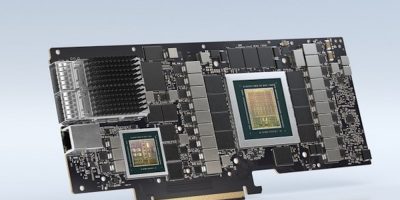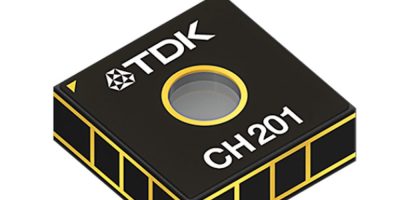At GTC, a virtual, global event hosted by Nvidia, the BlueField-2 family of data processing units (DPUs) was introduced. They are supported by DOCA, a data centre infrastructure on a chip architecture that raises networking, storage and security performance, says the company.
The BlueField-2 DPU can deliver the same data centre services that could consume up to 125 CPU cores, said the company, to free up the CPU cores to run other applications.
The Nvidia BlueField-2 DPU has the same capabilities as the company’s Mellanox ConnectX-6 Dx SmartNIC, with Arm cores. The fully programmable PCIe module delivers data transfer rates of 200Gbits per second and accelerates key data centre security, networking and storage tasks, including isolation, root trust, key management, RDMA/RoCE, GPUDirect, elastic block storage and data compression.
The BlueField-2X DPU, additionally has an Nvidia Ampere GPU with AI capabilities that can be applied to data centre security, networking and storage. Third generation Tensor Cores enable it to use AI for real time security analytics, including identifying abnormal traffic, which could indicate an intruder, together with host introspection to identify malicious activity, and dynamic security orchestration and automated response.
An Nvidia DOCA software development kit is also available to enable developers to build applications on DPU-accelerated data centre infrastructure services.
DOCA provides developers a comprehensive, open platform for building software-defined, hardware-accelerated networking, storage, security and management applications running on the BlueField family of DPUs.
Server manufacturers worldwide including ASUS, Atos, Dell Technologies, Fujitsu, GIGABYTE, H3C, Inspur, Lenovo, Quanta/QCT and Supermicro, have confirmed plans to integrate the DPUs into their enterprise server offerings.
Software support includes VMware (VMware Cloud Foundation), Red Hat (Red Hat Enterprise Linux and Red Hat OpenShift) and Canonical (Ubuntu Linux). Cybersecurity provider, Check Point Software Technologies, is integrating BlueField-2 DPUs into its technologies, which more than 100,000 organisations worldwide.
BlueField-2 DPUs are sampling now and BlueField-2X DPUs are under development and expected to become available in 2021.
DOCA is available for early access partners now.







